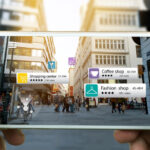Years ago, grocery stores and supermarkets implemented loyalty card systems which involved issuing physical loyalty cards, which customers could present at checkout to earn points or discounts based on their purchase amount. Over time, customers accumulated points that they could redeem for rewards such as discounts on future purchases, free products, or entry into exclusive promotions or events. This type of loyalty program encouraged repeat purchases and fostered loyalty by rewarding regular shoppers for their continued patronage.
Today, more than 90 percent of companies have similar loyalty programs in place, whether that be through gaining points from making purchases for a points-based program or paid loyalty programs, where customers can take advantage of immediate and ongoing benefits for a participation fee. While still effective to some extent, these traditional methods lack the sophistication and personalization demanded by modern consumers. A hard truth about loyalty programs is that while they can be effective in incentivizing repeat purchases and fostering customer engagement, they often face challenges in truly cultivating genuine loyalty. Many customers participate in loyalty programs primarily for the rewards or discounts they offer, rather than out of genuine affinity for the brand. As a result, loyalty programs may struggle to achieve their intended goal of building lasting emotional connections with customers. In fact, they may even contribute to a transactional relationship rather than a truly loyal one.
Amidst the ever-evolving realm of consumer engagement, loyalty programs must embark on a fresh chapter characterized by hyperpersonalization and rewarding customer engagement and brand advocacy — both much-anticipated trends for the future that are going to emphasize individual consumer preferences.
Brand loyalty and hyperpersonalization are constantly evolving in today’s digital landscape, fostering a symbiotic relationship between loyalty programs and consumers. In essence, hyperpersonalization is a commitment to understanding and serving customers on a deeper personal level, catering to their individual wants and behaviors. When applied to loyalty programs, brands can secure repeat business over time while setting the stage for long and prosperous relationships with lifelong customers.
The first step to doing this, though, is to really understand your customers on an individual level through zero- and first-party data. These insights are voluntarily shared or collected through direct interactions with customers — e.g., through polls, surveys, and chats — which allow brands to tailor rewards and offers based on individual preferences, purchase history, browsing patterns and engagement.
For example, a customer buys a brand-new jean jacket from her favorite brand and after purchasing the store sends her a thank-you note via email with an exclusive coupon for matching tennis shoes, which based on her browsing history, it know she’s been eyeing as well. By leveraging customer data and insights, the brand creates a seamless shopping experience for the customer, enhancing her satisfaction and fostering loyalty to the brand. This deeper level of personalized engagement increases the likelihood of customers making repeat purchases and advocating for the retailer among peers.
The last piece of the puzzle here is going beyond simply rewarding a customer for a purchase and instead taking it a step further to make them an associate of the brand. Hyperpersonalization is only the first step. The best brands think of advocacy when developing loyalty programs. Tesla, Kith, and Rare Beauty are already fostering this advocacy by creating unique programs centered around rewarding customers based on not just purchases, but advocacy as well. Other brands should take note.
Brands should reward their “top customers” for sharing their purchases organically across social networks and participating in brand communities. This in turn makes the content more authentic and trustworthy to their peers which leads new customers, who already have this baseline of trust, to organically check out the same products from that particular brand as they see their peers’ positive experiences.
An example of this would be after purchasing the jean jacket from the customer’s favorite brand, the brand sends a personalized thank-you note encouraging the buyer to share their purchase authentically on their social media channels in exchange for extra loyalty points — on top of the points already given for the initial purchase. From there, the customer’s social audience now sees brand trust shine through, which organically leads them to also make a purchase. Here, the brand is cultivating a strong sense of loyalty amongst buyers, both new and returning, and promoting advocacy by recognizing and engaging customers who share their experiences with their network, transforming them into micro-influencers or voices of the brand.
Rewarding customers for their loyalty is so much more than rewards directly from purchases. It’s about creating ways to turn customers into organic brand advocates, fostering a mutual relationship between brand and customer. Every brand knows that nurturing existing customer relationships through modern reward programs is not only cost effective but also profitable, and the brands that hit the right mixture of personalization and rewards for advocacy are going to be the ones that come out on top in terms of loyalty and revenue.
Manu Matthew is the CEO of Cohora, a company that enables brands to reimagine customer engagement by building direct connections fostered in a brand-owned social network built on first-party data.
View Original Article



















